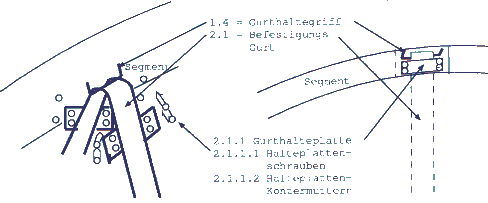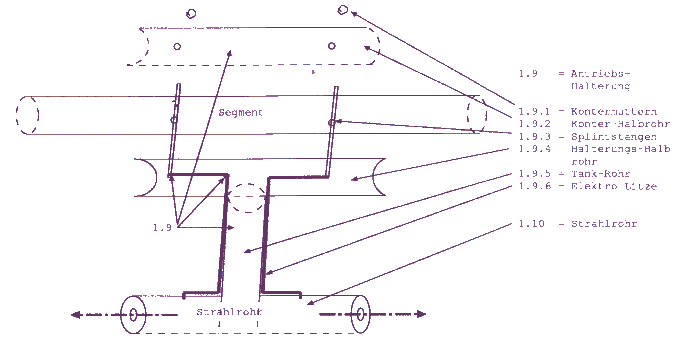
| POST & AUTHOR & Vision | RSS - Ring Segment System | LTH - Launcher Transport Head | EFO - Experimental Flying Object | RSC - Rotational Slingshot Catapult |
|
A Spacecraft Building System, able to build large space structures in a fast and simple way. Such structure could solve some major problems of manned space travel. For instance room deficiency and missing gravity.
Imagine a large disc of orders of square-kilometers made of a ring from pipes with strong carbon belts stretched in between. This disc can carry the payload (for example rooms, space stations, hotels, solar cells, greenhouses, fabrication facilities ... ) on both sides without size limitation.
When rotating, just place the astronauts or inhabitants rooms on a point of the disc with the appropriate gravity. ...
So you think this disc-idea is as old as Methusalem? Think twice! -
It is not a gigantic space-craft with walls, just a large ring from pipes and some belts! With this concept it is possible to generate such structures fast, with todays technic and with excellent value for the money.
Ring Segment System, that doesnīt sound exciting. But could you get excited if you would know that there is a way to build a huge platform for space crafts and space stations now?
A carrier which is large enough to provide artificial gravitation and room for solar cells to generate power, for greenhouses to grow food and produce oxygen, thus enabling manned interplanetar space travel and longtime space stations and other exciting space crafts like the STS, EFO, RSC featured on this site.
The RSS is a thin plate type design or just a skeleton made from carbon pipes and belts giving structural strength with minimum material usage- and weight - not even a half cubic metre of compressed carbon fibres would be needed for a 100 m diameter ring with 16 belts.
The Ring Segment System is just the payload mounting platform for a space craft , space station or even a space settlement using simple mounting devices to provide ample room with artificial gravitation to set installations were they are wanted. The point is that it could be set up with one launcher load having a huge disk right from the beginning with a lot of room to grow and the possibility of gravitation independently of the small size of the first time installations which might be added later. And yet it will provide the area to grow each time a launcher brings some more inflatable living space (rooms) or installations. RSS just delivers large size for little money in the beginning.
Since a lighter space craft with the same thruster power than a heavier one is also faster I would state that the RSS can be also considered as a high-speed space-craft design with the best possible payload-area to mass ratio.
Although the material is light weight, it is stronger than steel when it comes to take on pulling forces.


| POST & AUTHOR & Vision | RSS - Ring Segment System | LTH - Launcher Transport Head | EFO - Experimental Flying Object | RSC - Rotational Slingshot Catapult |
|